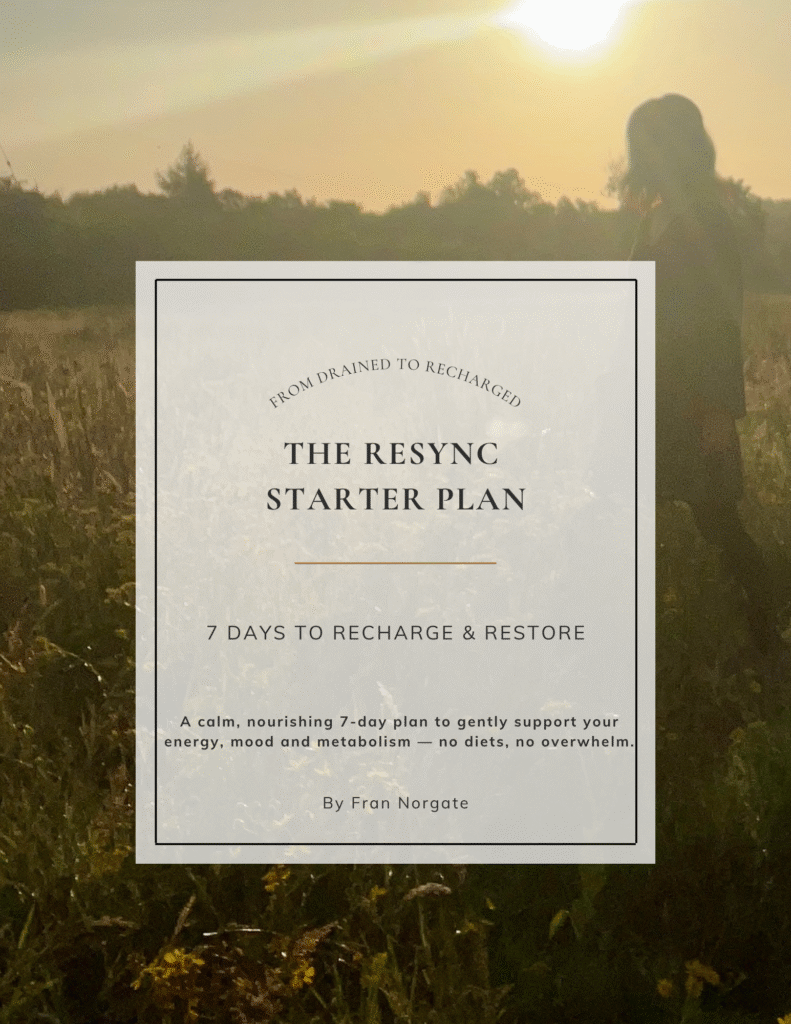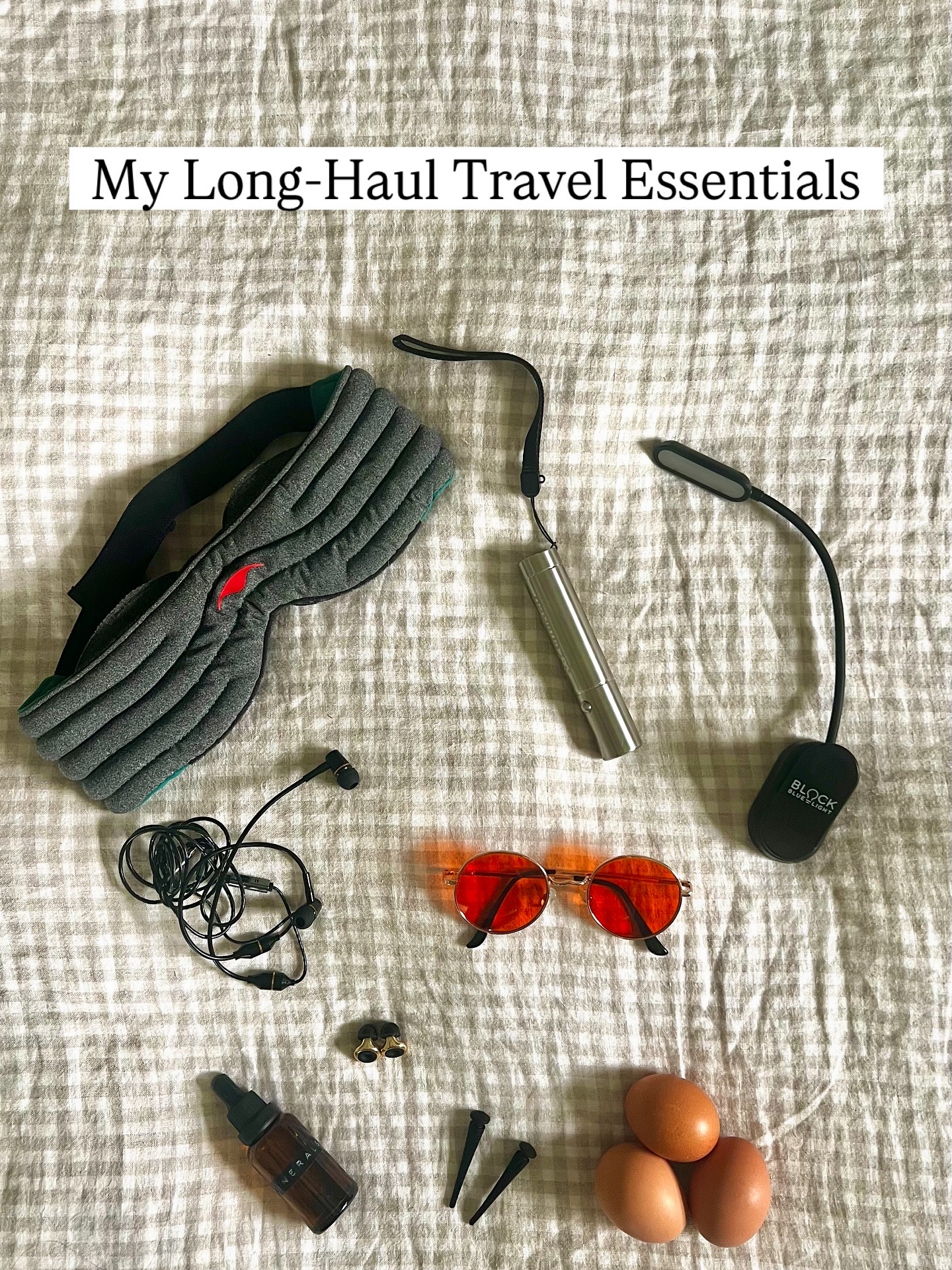Long-Haul Flight Essentials for Better Sleep, Energy, and Mood
The real challenge of long-haul flights
Last week my family and I travelled from Ireland to Australia — our first long-haul flights in seven years.
It was exciting, but if you’ve ever done a long-haul journey with kids, you’ll know it can feel like a full-body stress test.
Airports and planes are designed for efficiency, not wellbeing. You’re surrounded by harsh blue lighting, dehydrating cabin air, constant background noise, processed food, Wi-Fi and EMFs everywhere, and, of course, the dreaded time-zone shift. It’s no wonder most of us land feeling foggy, wired-but-tired, and craving sugar and coffee.
But it doesn’t have to be that way. With a few thoughtful travel essentials, it’s possible to protect your circadian rhythm, support your nervous system, and arrive with more energy left in the tank. (If you are unsure about the importance of circadian rhythm alignment, check out my blog post: Circadian Rhythms & Health: How to Reset Your Body’s Natural Clock).
Here’s what I packed (and why).
1. Blackout sleep mask
Sleep on planes is never easy, but darkness is non-negotiable for your circadian rhythm. Even small amounts of light can suppress melatonin (your sleep hormone) and reduce deep sleep. A blackout sleep mask creates total darkness, helping your brain shift into rest mode even when the cabin crew are serving meals at odd hours or your neighbour has their reading light on.
For me, a good sleep mask is the difference between fitful dozing and actually waking up feeling like I’ve had some restorative sleep.
2. Blue light blocking glasses
Most airports and cabins use bright, blue-rich LED lighting. It’s stimulating for staff, but terrible for passengers who are trying to rest or adjust their body clocks. Blue light directly suppresses melatonin, delays circadian rhythms, and makes jet lag more severe.
Wearing blue light blocking glasses in airports, at the gate, and during the flight helps protect circadian alignment and makes it much easier to fall asleep when you need to. I noticed that this time I didn’t feel quite so “wired” when the lights were blasting overhead. These are the ones I have been using for a few years now: blue-light blocking glasses (10% off with this link).
3. Airtube headphones
Most of us don’t think twice about using wireless earbuds or standard headphones, but sitting for hours with a Bluetooth device next to your head isn’t ideal. Airtube headphones work differently: the speaker sits further away and sound travels through hollow tubes. That means the EMF-emitting parts are kept away from your ear canal and brain.
It’s a simple swap that reduces your EMF exposure on long flights while still letting you enjoy podcasts, music, or audiobooks. I used the Bon Charge EMF Radiation Free Air Tube Earphones and the sound quality is surprisingly good!
4. Ear plugs
Cabin noise often registers at 80–85 decibels — the same as standing next to heavy traffic. It’s a constant, low-level stressor for your nervous system, especially during long-haul flights. Even if you don’t notice it consciously, your body does. That background hum increases stress hormones and makes it harder to drop into deep rest.
Loop ear plugs are my go-to. They take the edge off without blocking everything completely, which also made it easier for the kids to rest without being disturbed.
5. Blue-free reading lamp
Sometimes you want to read a book without relying on the glaring overhead lights or scrolling on your phone. A small, portable red or amber reading lamp lets you see clearly without suppressing melatonin or signalling “daytime” to your brain. This one is my favourite (10% off with this link).
It’s also great for when you’ve got children with you and don’t want to disturb their sleep by turning on the main lights.
6. Red light therapy torch
This one always gets questions, but it’s a game-changer. Red and near-infrared light support mitochondrial function, calm the nervous system, and counteract some of the “junk light” exposure from airports and planes. I use mine on sore muscles (sitting for hours really takes its toll) and sometimes on my face before trying to sleep — it feels like a signal to my body that it’s time to rest and repair.
Research also suggests red light helps the body clock recalibrate, which makes adjusting to a new time zone smoother. I use the LumiRed Mini.
7. Earthing plugs in shoes
This is my most unusual essential — and yes, I did get a few raised eyebrows telling people about them! I’ve installed earthing plugs in my shoes so I can ground as soon as we land. Grounding helps discharge built-up static and reconnects your body to the earth’s natural rhythms.
After a full day on long-haul flights, stepping outside barefoot or with earthing shoes genuinely feels like a reset button. Whenever possible, I walk around barefoot, but when it’s not practical the earthing plugs are brilliant! It’s one of the simplest ways I know to help recalibrate circadian rhythms and reduce inflammation after travel.
8. Mineral drops for water
Flying is incredibly dehydrating. Cabin air is usually only 10–20% humidity (compared to 40–60% in most homes), which means we lose fluids constantly. But drinking plain water isn’t enough — without minerals, it doesn’t hydrate cells effectively and can just make you run to the loo more often. And this problem is amplified when it comes to long-haul flights and being in transit for long periods of time.
Adding a few drops of trace minerals to water replenishes electrolytes and supports proper hydration. I do this on a daily basis anyway, but it’s especially helpful in situations like these where the body becomes very dehydrated.
9. Healthy snacks
Plane food has improved a little over the years, but it’s still mostly refined carbs, sugar, and seed oils. Eating it leaves me sluggish and makes my blood sugar crash. Instead, I pack my own nutrient-dense snacks — things like boiled eggs, homemade protein bars, and beef liver jerky.
These aren’t just “healthier” — they actually keep hunger steady, stabilise mood, and mean I don’t land already depleted and craving sugar. The kids also love these snacks.
Why this matters for more than just long-haul flights
These tools aren’t about being extreme. They’re about protecting the basics your body relies on: circadian rhythm, hydration, blood sugar, and nervous system balance. Those same foundations are what I focus on with clients who want better energy, clearer thinking, and more hormonal balance in daily life.
Because here’s the thing: what helps us thrive at home also helps us cope with unusual stressors — like 48 hours in transit.
Final thoughts
Our first long-haul trip in seven years was a big adventure. Did we still feel tired? Of course. But compared to past experiences, the difference in energy, mood, and sleep was huge.
If you’ve got a flight coming up — or even just want to make travel less draining — I hope this list inspires you to put together your own little travel toolkit.
What would you add to the list? I’d love to hear your must-have travel essentials.

Ready to Feel More Like
You Again?
The Resync Starter Plan is your free guide to gently restoring energy, balance, and clarity—without diets, overwhelm, or starting from scratch.
Inside, you’ll find:
- Simple shifts to support your hormones, digestion, and nervous system
- Calming rituals to help you feel grounded in a busy world
- A rhythm that fits real life—not another rigid health plan
It’s like a warm cuppa and a deep breath… for your body and mind.
👉 Download your free copy now and take your first step back to balance.

